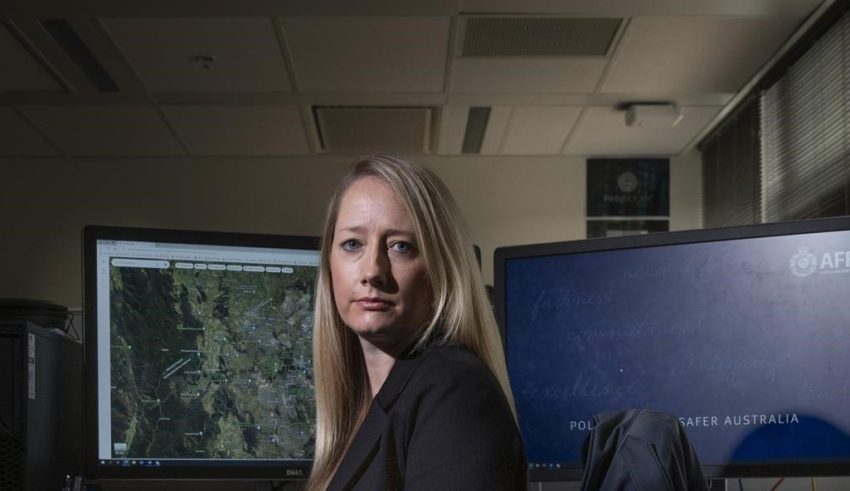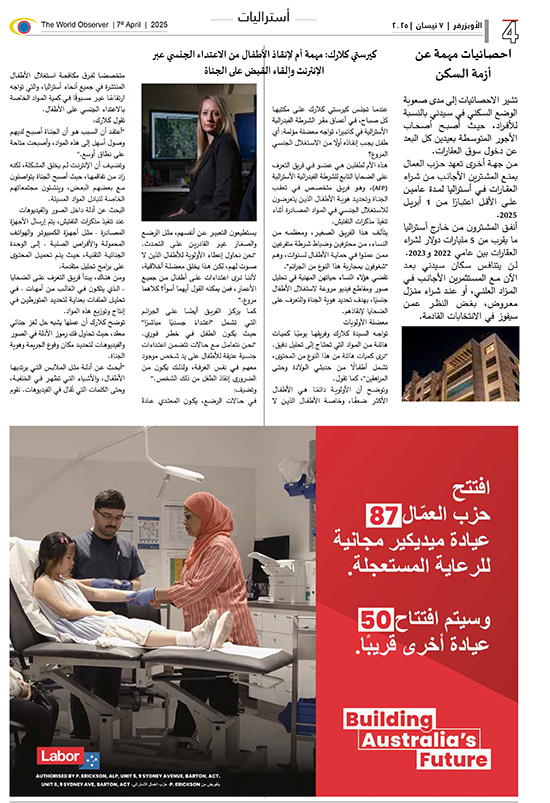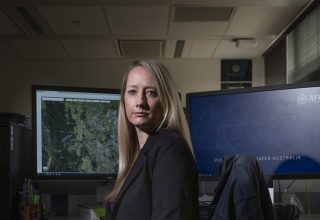
When Kirsty Clarke sits down at her desk each morning, in the bowels of the Australian Federal Police’s Canberra headquarters, she faces an excruciating dilemma: which child to rescue from horrific sexual exploitation first?
The mother-of-two is a member of the AFP’s little-known Victim Identification Team, whose job it is to locate perpetrators and the children they abuse in sexual exploitation material that has been seized during the execution of search warrants.
The small and predominantly female team is a mix of professional members and sworn police officers who are “passionate about their crime type” and have worked in child protection for years.
These women spend their work lives analysing horrific photos and videos of child sexual exploitation and abuse to identify perpetrators and put a name to their victims so they can be saved.
Each day Ms Clarke and her colleagues are confronted with an overwhelming amount of material to examine.
“We are seeing a huge volume of that type of material involving children from newborns, right up into teenagers,” she said.
“We need to work out where to focus our time so I try to prioritise the most vulnerable which, for me, is children without a voice, who can’t speak up (because they are pre-verbal).
“That would be the highest priority for us but that is a moral dilemma because we see abuse of very young children through to teenagers, and who says that one’s worse than the other? They’re not.”
The victim identification specialist said the team also prioritises “contact offences” where children are in immediate danger.
“That is the violent sexual assault of children with a perpetrator in the room because we need to remove the child from that person,” she said.
“With the newborns, it’s usually someone known to the child and obviously someone in contact with them.
“Then you’ve got the blackmailing, the sextortion and (remote online) exploitation of young people, which is a huge trend that we’re seeing.”
The Victim Identification Team provides specialist support to the AFP’s Joint Anti-Child Exploitation Teams around the country, who are faced with an explosion of child sexual abuse material.
“I think it’s because offenders have more access to it and it’s more readily available,” Ms Clarke said.
“Back many years ago, the abuse was still happening, but the internet has allowed it to be shared with other offenders.
“They find their communities as well. They talk to each other. They’ve found their people, essentially.”
When JACET investigators execute a search warrant, seized devices — computers, tablets and hard drives — are sent to the forensic unit where the contents of each device are uploaded to a software program.
From there, Victim Identification Team specialists — mostly mothers — painstakingly analyse the files to identify those involved in the production and distribution of child exploitation and abuse material.
Each image and video they review represents a crime scene that could be anywhere in the world.
Ms Clarke said the material she sees has been produced by offenders from “all walks of life” – who are well “camouflaged” into society – and involves the abuse of both boys and girls.
Her grim job is to forensically identify clues in the material that will pinpoint where the crime occurred and identify those involved.
“I look for clues such as what children are wearing, things that we can see in the background and what they’re actually saying in the videos. We do a lot of analysis on the audio,” she said.
“We’re looking for specific products that would narrow down where that child might be located by working out where in the world that product is made.”
Other clues Ms Clarke looks for include types of power-points, plants, furniture, fabrics and buildings.
“We start to build a series of clues,” she said.
“We’re putting all the pieces of that puzzle back together to try to pinpoint the location of that particular child.”
The 37-year-old, who has worked in this field for 12 years, said that often the material her team receives lacks intel.
“It can be difficult because sometimes we won’t see a lot of clues,” she said.
“So we’ve got to really rely on what we’re seeing and the data that sits behind that.
“It’s a pretty painstaking process, to actually be able to say, this child is located in this city and we believe the offender to be this person.
“That takes a lot of work to get to that place. It can be quite quick or it can take months or years.”



































 The World Observer Media produces a daily online newspaper, a daily Arabic online newspaper and a monthly printed Arabic/English magazine and a weekly printed Arabic/English newspaper.
The World Observer Media’s mission is to entertain and educate all generation from the Ethnic Communities in Australia, who are interested in local, national and foreign information.
The World Observer Media produces a daily online newspaper, a daily Arabic online newspaper and a monthly printed Arabic/English magazine and a weekly printed Arabic/English newspaper.
The World Observer Media’s mission is to entertain and educate all generation from the Ethnic Communities in Australia, who are interested in local, national and foreign information. 


